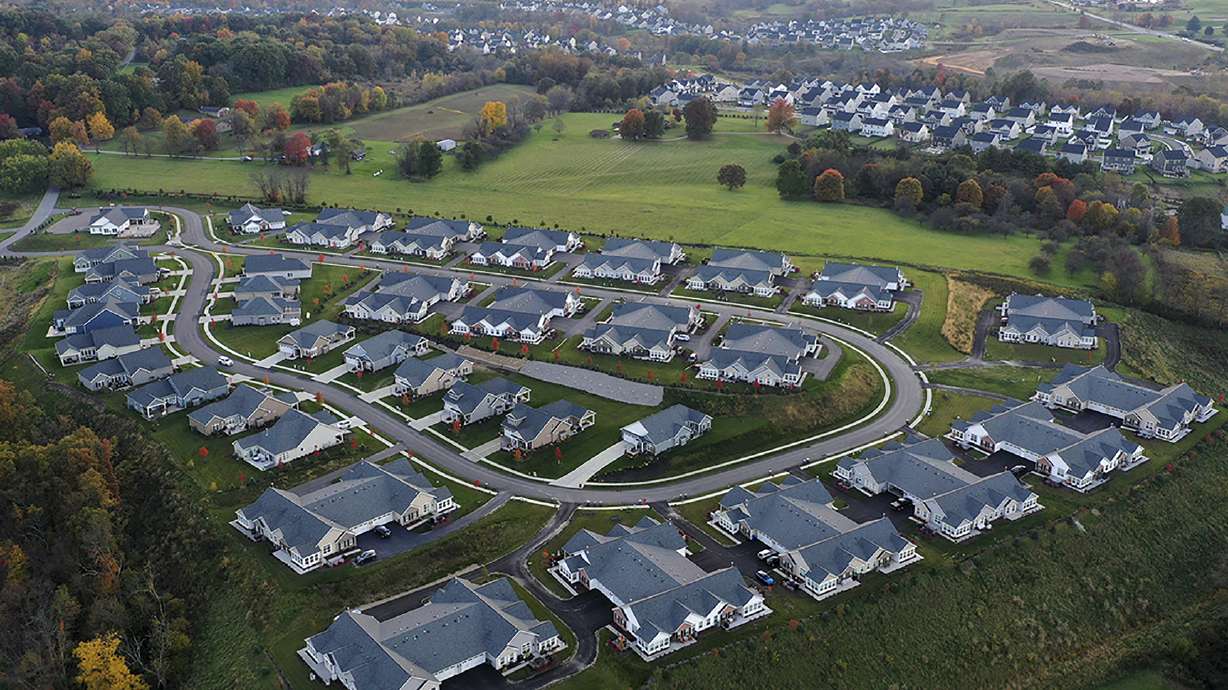Estimated read time: 3-4 minutes
This archived news story is available only for your personal, non-commercial use. Information in the story may be outdated or superseded by additional information. Reading or replaying the story in its archived form does not constitute a republication of the story.
LOS ANGELES — Sales of previously occupied U.S. homes in September fell for the fourth month in a row, grinding to their slowest pace in more than a decade as prospective homebuyers grapple with surging mortgage rates and a near historic-low level of properties on the market.
Existing home sales fell 2% last month from August to a seasonally adjusted annual rate of 3.96 million, the National Association of Realtors said Thursday. That's just above the 3.9 million unit pace that economists were expecting, according to FactSet. But it's the slowest sales pace since October 2010, when the market was still choked by foreclosures following the housing bust several years earlier.
Sales sank 15.4% compared with the same month last year and are down 21% through the first nine months of the year versus the same period in 2022.
Despite the housing market slump, home prices kept climbing versus a year ago. The national median sales price rose 2.8% from September last year to $394,300. It slipped 3.1% from August.
"Clearly, the story of limited inventory and rising and rising mortgage rates continues to hinder the home sales market," said Lawrence Yun, the National Association of Realtors' chief economist.
Yun also said he expects mortgage rates will ease by next spring.
"I think this is the top," he said. "Maybe we'll have a few months of very difficult sales because of this high interest rate, but things should be improving next year."
The weekly average rate on a 30-year mortgage moved above 7% in August, when many of the home sales that were finalized in September would have gone under contract. It has remained above that threshold since, surging this week to 7.63%, the highest level since 2000, according to mortgage buyer Freddie Mac.
Challenges for first-time homebuyers
High rates can add hundreds of dollars a month in costs for borrowers, limiting how much they can afford in a market already out of reach for many Americans. They also discourage homeowners who locked in rock-bottom rates two years ago from selling.
Mortgage rates have been climbing along with the 10-year Treasury yield, which lenders use as a guide to pricing loans. Investors' expectations for future inflation, global demand for U.S. Treasurys and what the Fed does with interest rates can influence rates on home loans.
The central bank has already pulled its main interest rate to the highest level since 2001 in hopes of extinguishing high inflation, and has indicated it may cut rates by less next year than earlier expected. The threat of higher rates for longer pushed Treasury yields to their highest levels in more than a decade.
While surging mortgage rates have shut out many prospective buyers, a chronic shortage of homes for sale continues to keep the market competitive, especially for the most affordable homes.
Homes sold last month typically within just 21 days after hitting the market, and about 26% of homes sold for more than their list price, the National Association of Realtors said.
All told, there were 1.13 million homes on the market by the end of last month, up 2.7% from August, but down 8.1% from September last year, the group said. That amounts to just a 3.4-month supply, going by the current sales pace. In a more balanced market between buyers and sellers, there is a four- to five-month supply.
The combination of higher mortgage rates and rising prices has particularly hurt first-time homebuyers who don't have any home equity to put toward their down payment. They accounted for just 27% of all homes sold last month. Historically, it was not unusual for them to make up 40% of sales.
Meanwhile, house hunters who can afford to bypass financing and pay in cash are taking up a bigger share of the market. Last month, all-cash deals accounted for 29% of all home sales, the National Association of Realtors said. Typically, all-cash transactions tend to represent about 20% of sales.
The last time all-cash transactions made up as big a slice of home sales? During the foreclosure crisis years that followed the late-2000s housing slump.









